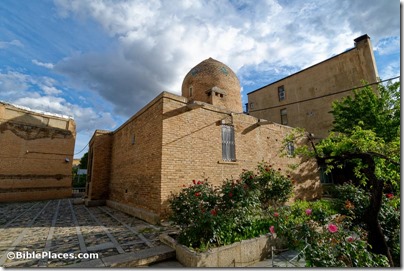“A sceptre about 3,200 years old made of copper and coated in silver leaf found in the biblical city of Lachish could be the first evidence of life-sized ‘divine statues’ in the Levant.”
Excavations of the underground Siloam Street have been (or were) halted after engineering instruments detected that the ground was moving.
Contrary to previous belief, chalkstone vessels continued to be used in the Galilee for several centuries after the destruction of the Jerusalem temple.
“Israeli archaeologists have published a 360-degree analysis of a rural, affluent Christian town in the Galilee that was most likely destroyed by Persian invaders in 613.”
Analysis of bird remains excavated in Jerusalem confirmed that specific species of birds – pigeons, doves – were indeed sacrificed in the Temple as the biblical text suggests. The story is based on an article in the latest issue of BASOR.
Roman and Byzantine mosaic floors provide insights into how humans restrained animals by the use of cages, ropes, knots, other tethering devices.
“A large number of archaeological sites in the West Bank, including many that are part of Jewish history and tradition, will be placed or remain under Palestinian control according to US President Donald Trump’s peace plan.”
An Explainer piece by Rossella Tercatin in the Jerusalem Post reveals who is in control of the archaeological sites in the West Bank.
Why is the Israel Museum still closed?
Ferrell Jenkins shares some photos and insights about the Judean wilderness.
Daniel Santacruz shares a dozen photos of wildflowers he took near his home in Maale Adumim.
This week we released volume #20 in the Pictorial Library of the Bible Lands. The Western Mediterranean collection focuses on Roman sites in Gaul (France) and Hispania (Spain) and includes more than 1,400 photos and 25 PowerPoints. The sale price ($25) ends on Tuesday.
HT: Joseph Lauer, Charles Savelle, Agade, Ted Weis, Explorator
![Church of the Holy Sepulcher locked, nf7550-sr_thumb[1] Church of the Holy Sepulcher locked, nf7550-sr_thumb[1]](https://www.bibleplaces.com/wp-content/uploads/2020/05/Church-of-the-Holy-Sepulcher-locked-nf7550-sr_thumb1_thumb.jpg)
